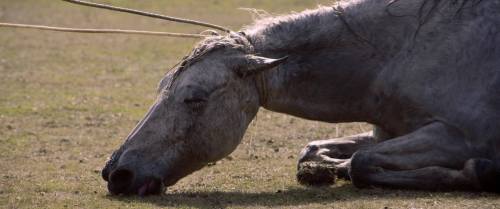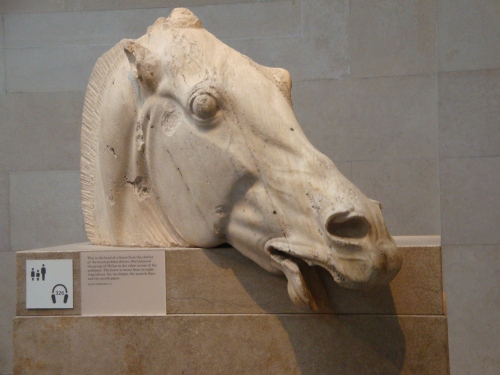Elective Affinities XXII: The Tired Horse
by Nandia Foteini Vlachou
.

Kis uykusu (Winter Sleep), dir. Nuri Bilge Ceylan, cinematography by Gökhan Tiryaki (2014)
.

Head of a horse of Selene from the east pediment of the Parthenon, Acropolis, Athens, 438-432 BC, British Museum, London (photo © Foteini Vlachou)
.
Once in a while, a film comes across that is different from other films. Simple on the surface, almost unassuming, it builds the story and the characters that inhabit its universe block by block. You are watching, lulled by its rhythm, while the film sneaks up on you and, when you least expect it, grabs you by the throat. That film was Winter Sleep for me. It obliterated me. The scene with the wild horses was when I knew it had gotten me. I was dimly aware of the possible accusations of animal cruelty that might be leveled against the director, but the horses were not tortured. The capturing technique, roping the animal until it surrendered from exhaustion, seemed traditional and ancient, and made me think of Mongol warriors riding through the steppes. And looking further back in time, there it was, the most moving interpretation of the subject, the Parthenon head of a horse, with its bulging eyes, slackened jaw and flared nostrils. Inexorably realistic in their execution, both scene and sculpture convey something deeper, universal and unutterable, as if the tired horses were carrying on their backs and through the centuries the weight of all humanity.
.

I have always thought that there was something sad about horses. They never appear to be happy to be ridden, and I have never tried to ride one, as I have never felt truly comfortable about the ‘breaking’ process.
The horses in both your examples look dejected and worn down. Very powerful imagery.
Best wishes, Pete.
LikeLiked by 1 person